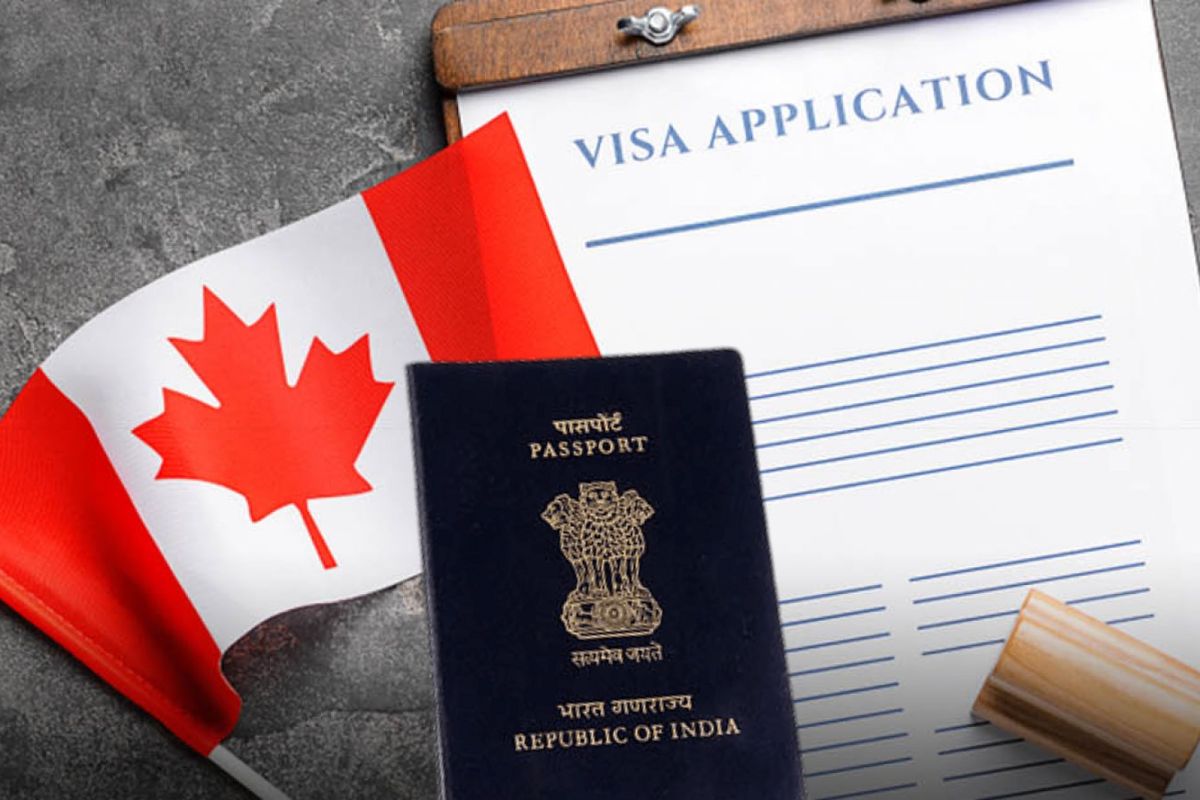The culinary landscape of the United States is rich and diverse, offering a multitude of opportunities for foreign chefs seeking to share their unique culinary skills.
With the growing popularity of international cuisines, there is an increasing demand for skilled chefs from around the world.
For many, the prospect of working in the U.S. is an exciting opportunity, but the process often hinges on securing a job with visa sponsorship.
This comprehensive guide will explore various aspects of finding chef jobs in the U.S. with visa sponsorship, including types of visas, job search strategies, and helpful resources.
Understanding U.S. Work Visas
Before diving into the job search, it’s crucial to understand the types of work visas available for chefs. The most common visas for foreign workers in the culinary field include:
1. H-1B Visa
The H-1B visa is designed for foreign professionals in speciality occupations. While it is more commonly associated with IT and engineering roles, chefs with specialised skills or unique culinary expertise may qualify.
The employer must demonstrate that the position requires specialised skills and that the chef holds the necessary qualifications.
2. O-1 Visa
The O-1 visa is for individuals with extraordinary ability or achievement in their field. Chefs who have received national or international recognition for their culinary skills might qualify.
This visa requires substantial documentation, including awards, media coverage, and letters of recommendation.
3. J-1 Visa
The J-1 visa is for exchange visitors participating in programs that promote cultural exchange. Culinary trainees can use the J-1 visa to gain experience in the U.S. The program is often used by culinary students or young chefs looking to enhance their skills.
4. E-2 Visa
The E-2 visa is for investors or employees of investment companies. While not specifically for chefs, it can be an option if the chef is involved in a culinary business that has significant investment from their home country.
Finding Jobs with Visa Sponsorship
Securing a job with visa sponsorship in the U.S. involves a strategic approach. Here are some effective strategies:
1. Research and Target Employers
Focus on employers known for hiring foreign chefs. High-end restaurants, international hotel chains, and resorts often seek diverse culinary talent. Research companies with a history of sponsoring work visas.
2. Networking
Leverage professional networks and culinary associations. Attend industry events, culinary festivals, and conferences to connect with potential employers. Networking can also be done online through platforms like LinkedIn.
3. Culinary Recruitment Agencies
Agencies specializing in culinary placements can be invaluable. They understand the visa process and have connections with employers willing to sponsor foreign talent.
4. Online Job Portals
Websites like Indeed, Glassdoor, and Culinary Agents list job openings with potential visa sponsorship. Use keywords like “visa sponsorship” or “H-1B” in your searches.
5. Internships and Training Programs
Consider applying for internships or training programs that offer J-1 visas. These can provide valuable U.S. experience and may lead to long-term employment opportunities.
Tips for a Successful Application
1. Tailor Your Resume
Highlight your culinary skills, experience, and any international recognition. Emphasize any unique expertise that sets you apart from local candidates.
2. Prepare a Strong Portfolio
Include photographs of your culinary creations, menus you’ve designed, and any media coverage of your work. A well-documented portfolio can strengthen your application for an O-1 visa.
3. Obtain Professional References
Secure letters of recommendation from previous employers or culinary professionals who can vouch for your skills and achievements.
4. Understand Cultural Differences
Familiarize yourself with American culinary trends and customer service standards. Highlight your ability to adapt to different culinary environments.
Challenges and Considerations
1. Navigating Visa Processes
Visa applications can be complex and time-consuming. Consider consulting with an immigration attorney to ensure your application is accurate and complete.
2. Competition
The culinary industry is competitive, and securing a job with visa sponsorship requires persistence and determination. Be prepared for a lengthy job search process.
3. Adapting to a New Environment
Moving to a new country involves cultural, social, and professional adjustments. Be open to learning and adapting to new culinary styles and workplace cultures.
Resources and Links
- U.S. Citizenship and Immigration Services (USCIS): Official Website: For detailed information on visa categories and application processes.
- Culinary Agents: Job Listings and Networking
- American Culinary Federation: Professional Networking
- International Association of Culinary Professionals: Industry Resources.
FAQs
1. What types of visas are available for foreign chefs seeking jobs in the USA?
Foreign chefs can apply for several types of visas, depending on their qualifications and the type of employment offered. Common visa options include:
- H-1B Visa (for highly skilled workers in specialised fields)
- O-1 Visa (for individuals with extraordinary abilities in the culinary arts)
- EB-3 Visa (employment-based immigrant visa for skilled workers)
- J-1 Visa (for cultural exchange programmes, including chef training) Each visa has different eligibility requirements and application procedures.
2. What qualifications are required for foreign chefs to be eligible for visa sponsorship in the USA?
To be eligible for visa sponsorship, foreign chefs typically need:
- Formal culinary training (such as a degree or diploma from a recognised culinary school)
- Professional experience (several years of work experience in the culinary field)
- Job offer from a U.S. employer willing to sponsor the visa Some visas, like the O-1, require demonstrating extraordinary ability through awards, media recognition, or high-level positions in the culinary industry.
3. Which U.S. employers are likely to sponsor foreign chefs for visas?
Large restaurants, hotel chains, and upscale dining establishments are the most likely employers to sponsor foreign chefs.
High-demand areas like New York, Los Angeles, and Miami, which are known for their diverse culinary scenes, often seek international talent to enhance their offerings.
Additionally, certain niche or speciality cuisine restaurants may seek foreign chefs to provide authenticity.
4. Can foreign chefs apply for permanent residency (Green Card) through their employment?
Yes, foreign chefs can apply for permanent residency in the USA through employment-based visas, such as the EB-3 Visa.
This is a common pathway for skilled workers, including chefs, who have a permanent job offer from a U.S. employer.
The process typically requires the employer to file a petition on behalf of the chef, and the chef must meet specific qualifications.
5. What is the average salary for foreign chefs in the USA with visa sponsorship?
The salary for foreign chefs in the USA can vary based on factors such as experience, location, and the type of establishment. On average:
- Entry-level chefs can expect to earn between $35,000 to $50,000 per year.
- Experienced or executive chefs in high-end restaurants or hotels may earn between $60,000 and $100,000 or more per year. Salaries may also be influenced by the cost of living in different cities.
6. How long does the visa sponsorship process take for foreign chefs?
The visa sponsorship process can vary depending on the type of visa. For temporary work visas like the H-1B or O-1, the process may take several months, depending on the availability of visas, the complexity of the application, and the U.S. employer’s preparation.
For permanent residency through the EB-3 Visa, the process can take longer, sometimes up to 1-2 years or more, depending on processing times and visa availability.
Conclusion
The journey to becoming a chef in the U.S. with visa sponsorship is challenging but achievable with the right approach.
By understanding visa options, leveraging networks, and preparing a compelling application, foreign chefs can find rewarding opportunities to showcase their culinary talents in the American market.
Whether through high-end restaurants, innovative culinary startups, or cultural exchange programmes, the U.S. offers a vibrant stage for culinary professionals from around the world.










109 comments
Your article helped me a lot, is there any more related content? Thanks!
Thank you for your sharing. I am worried that I lack creative ideas. It is your article that makes me full of hope. Thank you. But, I have a question, can you help me?
Thanks for sharing. I read many of your blog posts, cool, your blog is very good. https://www.binance.com/ES_la/register?ref=T7KCZASX
заработок на аккаунтах маркетплейс аккаунтов
гарантия при продаже аккаунтов платформа для покупки аккаунтов
площадка для продажи аккаунтов продажа аккаунтов
гарантия при продаже аккаунтов профиль с подписчиками
заработок на аккаунтах перепродажа аккаунтов
магазин аккаунтов маркетплейс аккаунтов
биржа аккаунтов https://pokupka-akkauntov-online.ru
Gaming account marketplace Marketplace for Ready-Made Accounts
Account Selling Platform Sell Account
Account Store Online Account Store
Account Trading Platform Account market
Account Catalog Profitable Account Sales
Account Trading Platform Verified Accounts for Sale
Find Accounts for Sale Sell accounts
Account Selling Service https://accountsmarketplaceonline.com/
Purchase Ready-Made Accounts Buy accounts
Account Sale Guaranteed Accounts
social media account marketplace account selling service
account sale account store
account sale gaming account marketplace
buy account account exchange service
guaranteed accounts account buying platform
sell accounts account purchase
account trading platform website for selling accounts
secure account purchasing platform account trading platform
account trading platform purchase ready-made accounts
marketplace for ready-made accounts profitable account sales
gaming account marketplace secure account sales
accounts marketplace https://accounts-buy.org/
account buying service account trading platform
social media account marketplace profitable account sales
secure account purchasing platform database of accounts for sale
account market account purchase
verified accounts for sale account selling service
sell pre-made account account exchange
website for buying accounts sell pre-made account
account market website for buying accounts
social media account marketplace purchase ready-made accounts
verified accounts for sale purchase ready-made accounts
website for buying accounts buy account
buy pre-made account website for buying accounts
account market account trading platform
website for buying accounts profitable account sales
social media account marketplace accounts market
account trading https://accounts-offer.org
account trading service https://accounts-marketplace.xyz
sell pre-made account https://buy-best-accounts.org
social media account marketplace https://social-accounts-marketplaces.live
Thank you for your sharing. I am worried that I lack creative ideas. It is your article that makes me full of hope. Thank you. But, I have a question, can you help me?
sell pre-made account accounts marketplace
account exchange https://social-accounts-marketplace.xyz/
online account store account market
account selling service https://buy-accounts-shop.pro
guaranteed accounts accounts market
database of accounts for sale https://accounts-marketplace.online
secure account sales https://accounts-marketplace-best.pro
биржа аккаунтов akkaunty-na-prodazhu.pro
покупка аккаунтов магазины аккаунтов
площадка для продажи аккаунтов kupit-akkaunt.xyz
маркетплейс аккаунтов https://akkaunt-magazin.online/
магазин аккаунтов https://akkaunty-market.live/
продажа аккаунтов kupit-akkaunty-market.xyz
биржа аккаунтов akkaunty-optom.live
магазин аккаунтов https://online-akkaunty-magazin.xyz
купить аккаунт https://akkaunty-dlya-prodazhi.pro/
покупка аккаунтов маркетплейсов аккаунтов
Your article helped me a lot, is there any more related content? Thanks!
buy fb account https://buy-adsaccounts.work
buy aged facebook ads accounts facebook ads account buy
buy facebook advertising accounts buy fb account
facebook ads account for sale https://buy-ads-account.click
buy facebook advertising accounts facebook ad account buy
buy aged fb account buying facebook account
facebook accounts to buy https://ad-account-for-sale.top/
facebook ads accounts https://ad-accounts-for-sale.work
google ads account buy https://buy-ads-account.top
buy verified google ads account buy google ads threshold account
buy google ads agency account google ads account buy
adwords account for sale https://ads-account-buy.work
buy google adwords accounts buy google ads agency account
google ads account for sale google ads reseller
google ads account buy https://buy-ads-agency-account.top
buy google ad threshold account buy google ads verified account
buy account google ads https://ads-agency-account-buy.click
buy verified business manager https://buy-business-manager.org/
buy google ads accounts buy verified google ads account
buy business manager account https://buy-bm-account.org/
buy verified business manager https://buy-business-manager-acc.org
buy facebook business manager verified https://buy-verified-business-manager-account.org
verified facebook business manager for sale https://buy-verified-business-manager.org
facebook bm for sale facebook bm buy
verified facebook business manager for sale https://buy-business-manager-verified.org/
verified bm buy-bm.org
verified facebook business manager for sale https://verified-business-manager-for-sale.org
buy facebook verified business account https://buy-business-manager-accounts.org
buy tiktok ads accounts https://buy-tiktok-ads-account.org
tiktok ads account for sale https://tiktok-ads-account-buy.org
buy tiktok business account buy tiktok ads accounts
tiktok agency account for sale https://tiktok-agency-account-for-sale.org
buy tiktok business account https://buy-tiktok-ad-account.org
tiktok ads account for sale https://buy-tiktok-ads-accounts.org
tiktok ads agency account https://tiktok-ads-agency-account.org
tiktok ad accounts https://buy-tiktok-business-account.org
tiktok ad accounts https://buy-tiktok-ads.org
Your point of view caught my eye and was very interesting. Thanks. I have a question for you. https://accounts.binance.com/id/register-person?ref=GJY4VW8W
Thanks for sharing. I read many of your blog posts, cool, your blog is very good.